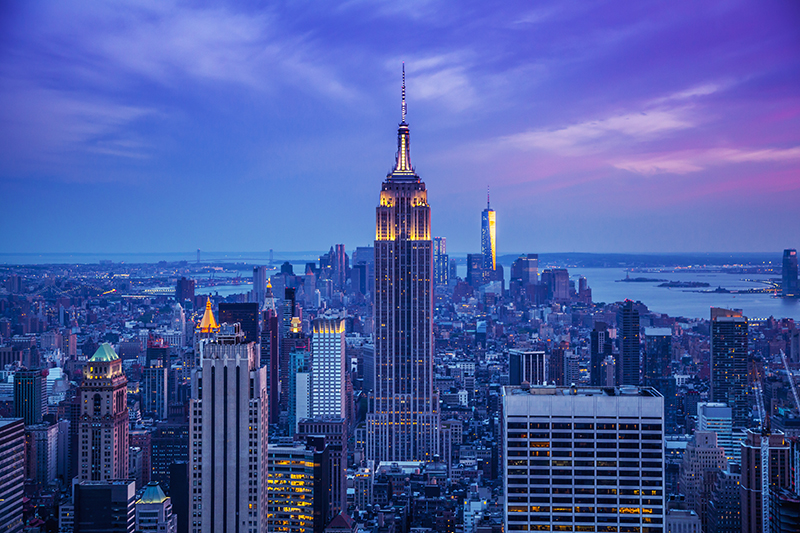Top U.S. Multifamily Markets of the Decade

- The 2010s solidified the multifamily market's recognition as a premier asset class.
- Manhattan was the leader for multifamily investment, with $74.5 billion in transactions from 2010 to 2019.
- Markets in the Sun Belt became hot spots for capital over the decade, including standout cities like Atlanta.
The 2010s decade began in the wake of one of the deepest housing downturns the country had ever seen, amid a global financial crisis, and ended with uncertainties surrounding a trade war with China and accelerated climate change.
There was also a massive demographic shift previously unseen in the country. Baby boomers entered into retirement and millennials came of age.
Over the course of the decade, the multifamily real estate market emerged as a premier asset class. Demand was driven not only by the shifting demographics, but also housing affordability issues surrounding escalating prices, limited supply and stagnant wage growth.
Real Capital Analytics (RCA) recently dubbed the 2010s a “fantastic” decade for the U.S. commercial real estate market overall, as the national RCA CPPI for all property types increased 103% over the last 10 years. The multifamily segment of the index measured an especially successful run, increasing more than 160%, by far the highest of the four major property sectors.
RCA reported a total of $1.2 trillion in transaction volume during the decade, setting record numbers nearly every year. The average sales price increased from $77,900/unit during 2010 to $176,000/unit during 2019, while the average cap rate fell from 6.8% to 5.4%. The top destinations for capital investment were among the largest markets in the country, but a closer look at the data reveals each market’s individual performance.
Manhattan Takes the Top Spot for Multifamily Investment
The Manhattan market led the U.S. with a total of $74.5 billion in multifamily transactions recorded from 2010 through 2019. Manhattan was the nation’s second most expensive market (behind only San Francisco), finishing the decade with an average sale price of $437,400/unit, as compared with $195,900/unit during 2010. Manhattan also finished with the second lowest average cap rate, which declined from 5.6% to 4.4%, again trailing only San Francisco.
Additionally, New York City’s outer boroughs also made the top rankings, with $39.3 billion in volume and prices increasing from $102,200/unit to $237,700/unit.
Demand in the New York area was driven by a tight labor market and strong local economy, including the explosion of the technology sector. Going into the next decade, investors will be keeping an eye on the slowdown in the financial services sector, as well as the stagnant housing market and increasing out-migration.
Dallas Investment Ramps Up in Second Half of the Decade
Dallas was number two on the list, with a total of $68.8 billion in sales. The market dominated the second half of the decade, leading all markets with more than $48.3 billion in sales. The average multifamily sales price finished at $128,500/unit and the cap rate was 7.3%.
Employment in Dallas increased by 35% during the decade, an outstanding rate of growth given the extremely large size of the metro area, adding more than 720,000 jobs. The area’s strong financial services industry and position as a distribution hub, as well as strong population growth and positive migration trends, will continue to drive multifamily demand in the 2020s.
Decade for Los Angeles Characterized By High Housing Costs
Los Angeles finished just behind Dallas, at $65.1 billion. The decade for L.A. was characterized by high prices (finishing at $292,700/unit) and low cap rates (falling from 5.6% to 4.6%), with both trailing only Manhattan among the top markets during 2019.
During the decade, the Los Angeles metro area added nearly 690,000 jobs, representing a 17% growth rate. While a considerable total number of jobs, the growth rate was in line with the national average. The healthcare and construction sectors are expected to remain significant drivers of employment in the area, and high housing costs should continue to solidify rentership demand.
Sun Belt Becomes Top Destination for Capital
Sun Belt markets performed especially well during the expansion. In addition to Dallas, Atlanta ($56.7 billion) and Houston ($47.9 billion) ranked high as top destinations of capital. Atlanta had the highest cap rates among the top markets at the beginning of the decade, at 7.7%, although a strong improvement in occupancy helped depress the cap rate to 5.6% by decade end.
Prices in Houston increased 185%, with cap rates falling from 7.5% to 5.4%, driven by the market’s emerging tech scene. The area’s low taxes and affordable land prices will continue to foster a favorable multifamily investment market.
Austin rounded out the list, with $28.7 billion in multifamily transactions recorded. Austin had the top employment growth rate among large markets during the decade at more than 43%, adding 335,000 jobs.
Western Markets See Strong Price Increases
Some growing western markets where residents went to escape the expensive Bay Area also ranked highly, including Seattle with $40.9 billion in sales. Seattle started the decade with one of the lowest average cap rates in the nation at 5.7%, which declined to 5.0% for 2019.
Phoenix and Denver finished the decade in the same spot, with each falling just shy of $40 billion. Phoenix saw the second-highest price growth in the nation during the decade (trailing only Las Vegas), with the average sales price rising to $157,200/unit from $45,400/unit, an increase of nearly 250%. Prices in Denver also showed a strong increase of nearly 200%, finishing at $219,400/unit.
For more multifamily market research and insights, visit the Chatter blog.
Note: All multifamily data sourced from Real Capital Analytics, unless otherwise noted. Employment data is sourced from the U.S. Bureau of Labor Statistics.

